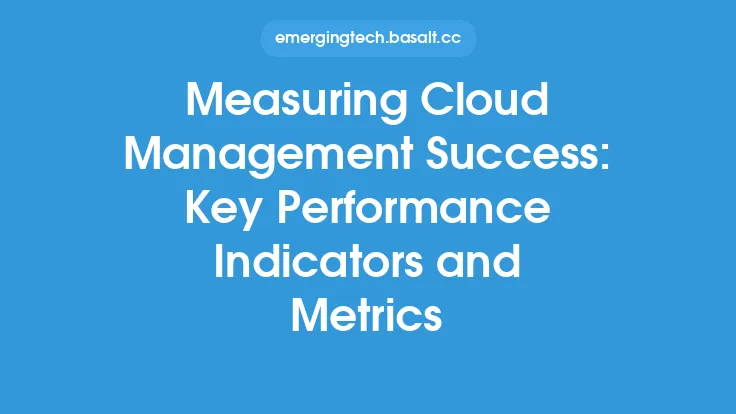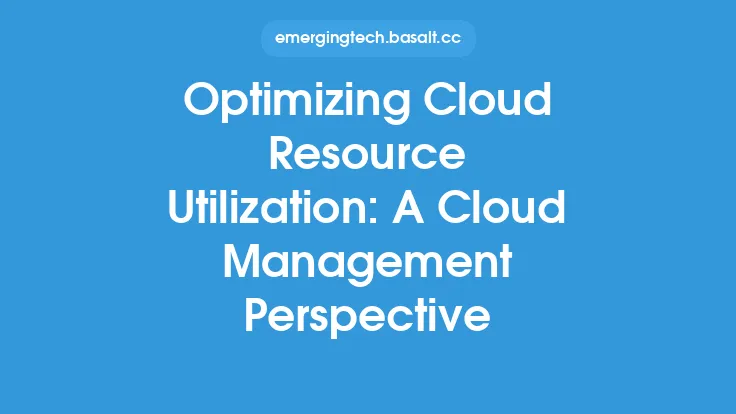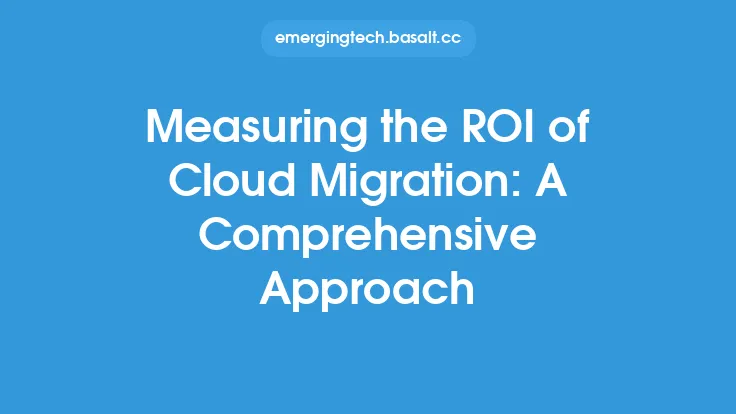Measuring cloud scalability is crucial for ensuring that applications and services can handle increased traffic, usage, or demand without compromising performance. To achieve this, it's essential to track key metrics that provide insights into the scalability of cloud resources. These metrics can be broadly categorized into performance, capacity, and cost metrics.
Introduction to Key Metrics
Performance metrics are used to measure the responsiveness and efficiency of cloud resources. Some of the key performance metrics include latency, throughput, and error rates. Latency refers to the time it takes for a request to be processed and a response to be sent back to the user. Throughput measures the amount of data that can be processed within a given time frame. Error rates, on the other hand, indicate the number of failed requests or transactions. By monitoring these metrics, organizations can identify bottlenecks and areas for improvement in their cloud infrastructure.
Capacity Metrics
Capacity metrics are used to measure the availability and utilization of cloud resources. These metrics include CPU utilization, memory usage, and storage capacity. CPU utilization measures the percentage of time that the CPU is busy processing requests. Memory usage indicates the amount of memory allocated to applications and services. Storage capacity measures the amount of storage available for data and applications. By tracking these metrics, organizations can ensure that they have sufficient resources to handle increased demand and avoid resource shortages.
Cost Metrics
Cost metrics are used to measure the financial impact of cloud scalability. These metrics include cost per user, cost per transaction, and return on investment (ROI). Cost per user measures the cost of providing services to each user. Cost per transaction measures the cost of processing each transaction. ROI measures the financial return on investment in cloud resources. By monitoring these metrics, organizations can optimize their cloud spending and ensure that they are getting the best value for their money.
Tools for Measuring Cloud Scalability
There are several tools available for measuring cloud scalability. These tools can be broadly categorized into cloud provider tools, third-party tools, and open-source tools. Cloud provider tools, such as Amazon CloudWatch and Google Cloud Monitoring, provide detailed metrics and insights into cloud resource utilization and performance. Third-party tools, such as New Relic and Datadog, provide additional features and functionality for monitoring and optimizing cloud scalability. Open-source tools, such as Prometheus and Grafana, offer a cost-effective and customizable solution for measuring cloud scalability.
Best Practices for Optimizing Cloud Scalability
To optimize cloud scalability, organizations should follow best practices such as right-sizing resources, using autoscaling, and implementing load balancing. Right-sizing resources involves allocating the optimal amount of resources to applications and services. Autoscaling involves automatically adding or removing resources in response to changes in demand. Load balancing involves distributing traffic across multiple resources to ensure that no single resource becomes a bottleneck. By following these best practices, organizations can ensure that their cloud infrastructure is scalable, efficient, and cost-effective.
Technical Considerations
From a technical perspective, optimizing cloud scalability requires a deep understanding of cloud architecture and infrastructure. This includes understanding the different types of cloud storage, such as block storage and object storage, and the different types of cloud networking, such as virtual private clouds (VPCs) and subnets. It also requires understanding the different cloud deployment models, such as public cloud, private cloud, and hybrid cloud. By understanding these technical considerations, organizations can design and implement scalable cloud architectures that meet their specific needs and requirements.
Conclusion
Measuring and optimizing cloud scalability is critical for ensuring that applications and services can handle increased traffic, usage, or demand without compromising performance. By tracking key metrics, using the right tools, and following best practices, organizations can ensure that their cloud infrastructure is scalable, efficient, and cost-effective. Whether you're a cloud architect, a developer, or an IT manager, understanding cloud scalability is essential for delivering high-quality services and applications in the cloud. By focusing on the key metrics, tools, and best practices outlined in this article, organizations can optimize their cloud scalability and achieve their business goals.





